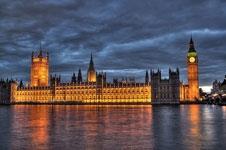Published responses to government consultation show majority agree to target of cutting CO2 by 25%
Most industry professionals agree with the proposed changes to Part L of the Building Regulations, which will come into force later this year.
The Communities Department has published industry responses to the Part L and F consultations and also the impact assessments which show how the costs of the changes affect the industry.
The Part L impact assessment states that the costs of implementing higher standards will be more than outweighed by the energy savings for all building types.
Most respondents agreed that proposed target of cutting carbon emissions by 25% compared with the 2006 version of Part L was reasonable.
They also agreed that a flat 25% reduction rate for all dwellings made sense and agreed with proposals to introduce an ‘aggregate approach’ for non dwellings.
The proposed regulations allocate different carbon reduction targets for different building types depending on how hard this is to achieve with the idea the total reduction for all non dwellings averages 25%.
There were some concerns that the proposed 36% reduction for industrial buildings was too high and could mean fewer of this type of building would be constructed.
Most respondents agreed that proposed target of cutting carbon emissions by 25% compared with the 2006 version of Part L was reasonable
There was also strong support for amending the exemptions from Part L. Currently historic buildings, places of worship and temporary buildings are exempt from Part L. Concerns were expressed about the impact this could have on historic buildings although some respondents felt this could be tackled with better guidance.
Removing the exemption for conservatories under 30m2 was also strongly supported. Respondents felt regulating compliance for conservatories could be done using a competent persons scheme similar to the replacement window industry where installers self certify their work complies with Part L.
There was almost universal support for insulating indoor swimming pools and many suggested this should also be extended to outdoor pools too.
The proposal to require designers to submit the carbon calculations and specification for the fabric and services to building control before work started also enjoyed near universal support. Respondents felt this would help improve compliance rates.
There was also support for an accredited construction details scheme similar to the one used for Part E that deals with sound.
The approved documents for Parts L and F could be published in the next two weeks. The statutory instrument needed for the changes has already been laid before Parliament so the approved documents can be published during the run-up to the election.




























No comments yet